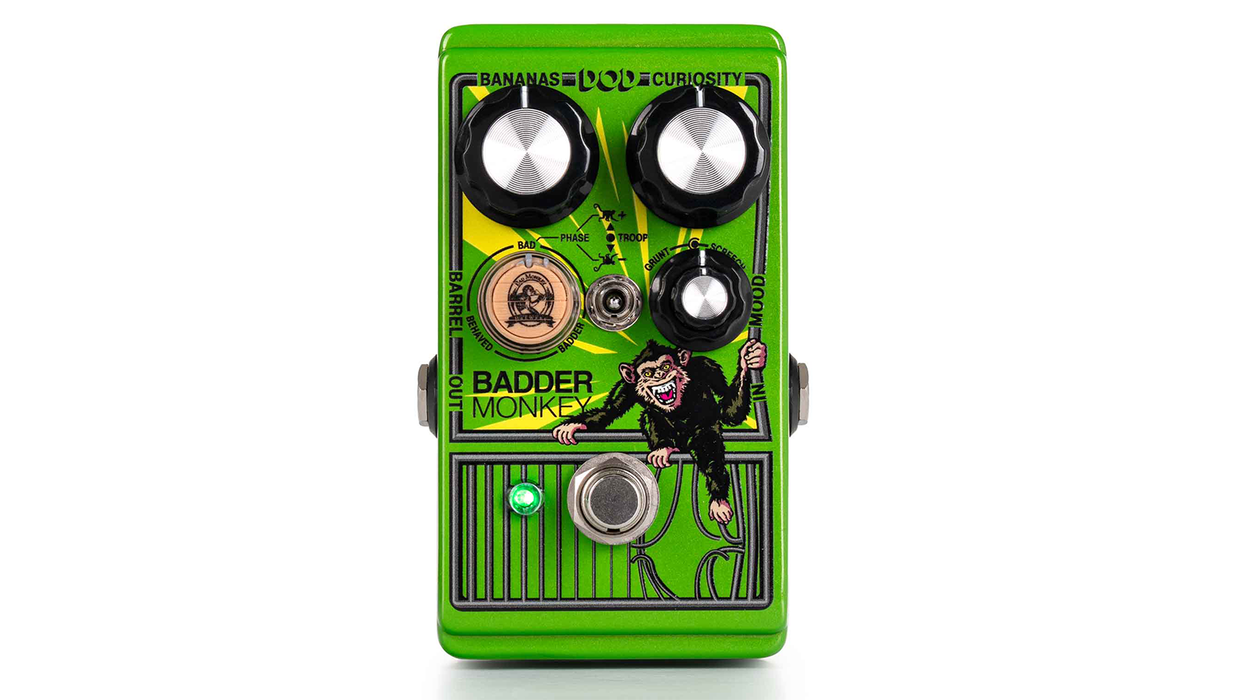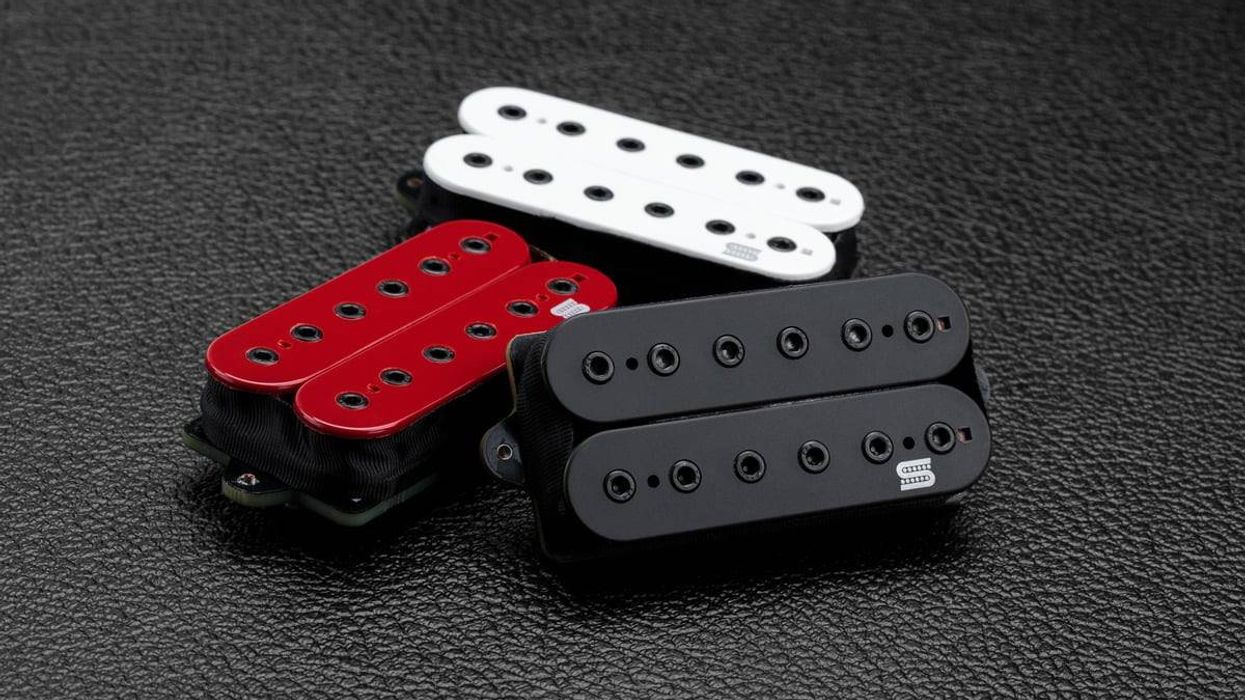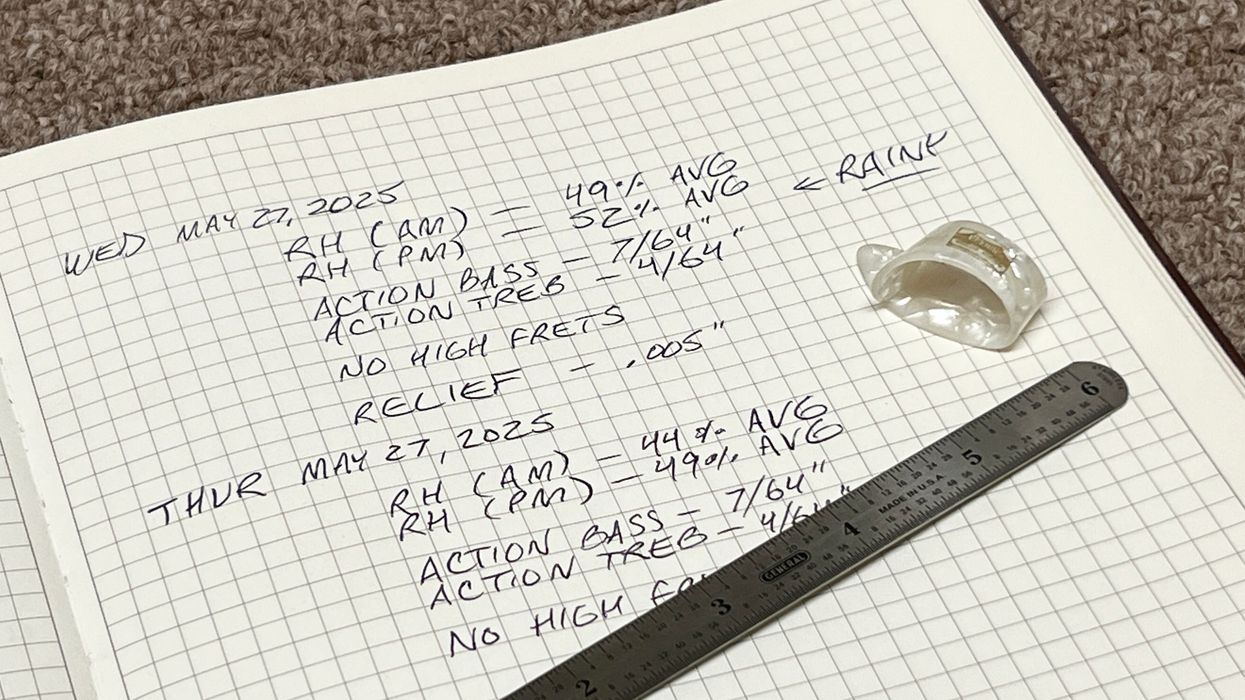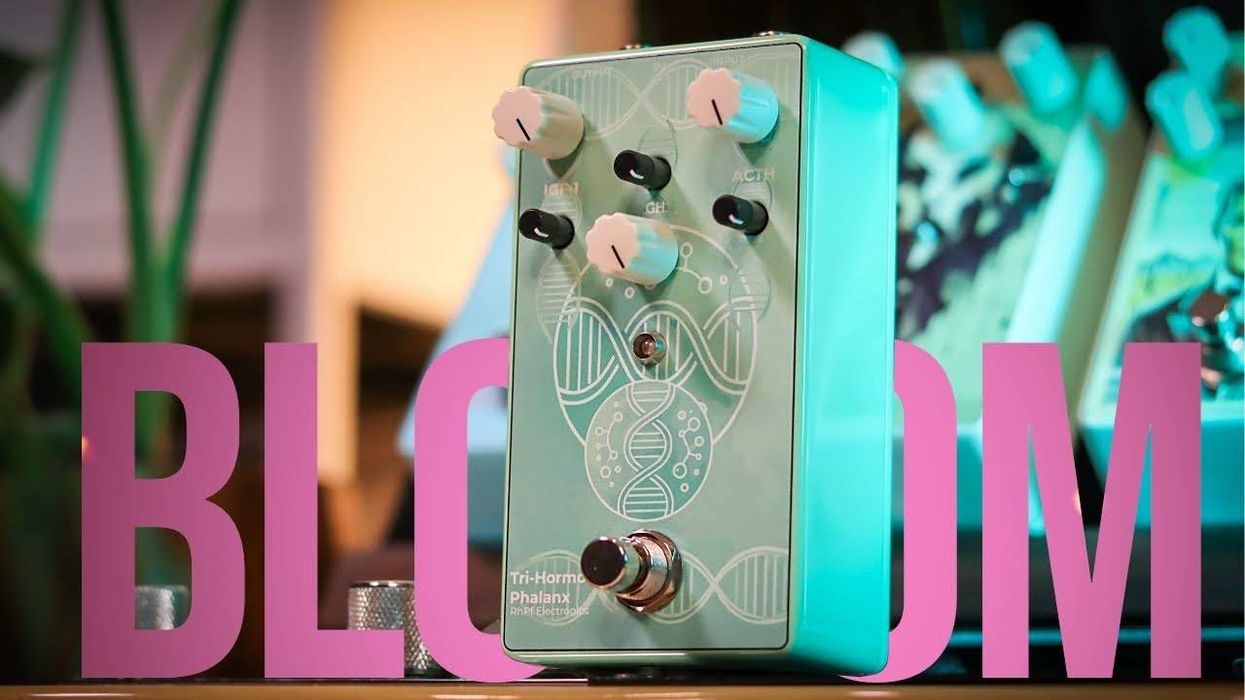The John 5 Ghost Telecaster features an all-white fretboard, red killswitch, and debuts alongside a custom-branded instrument cable, leather strap, and a 6-pack of 351 celluloid picks.
“I’ve played Telecasters my whole life and getting to design my own is a dream come true,” said John 5. “When it came to design, I was inspired by some of Fender’s previous collaborations, but sought to create a model that would be both visually stunning and comfortable to play. Fender helped me design a Telecaster that was different from anything else on the market and the easy-to-play all-white fretboard and unique pickguard is proof of that. The leather strap and cable match the guitar’s white aesthetic and the pick visuals are absolutely killer!”
Introducing the John 5 Ghost Telecaster. It features a top-bound alder body and 1-piece maple neck finished in an enchanting Arctic White gloss and accented by striking red appointments and a gleaming mirrored pickguard/control plate.
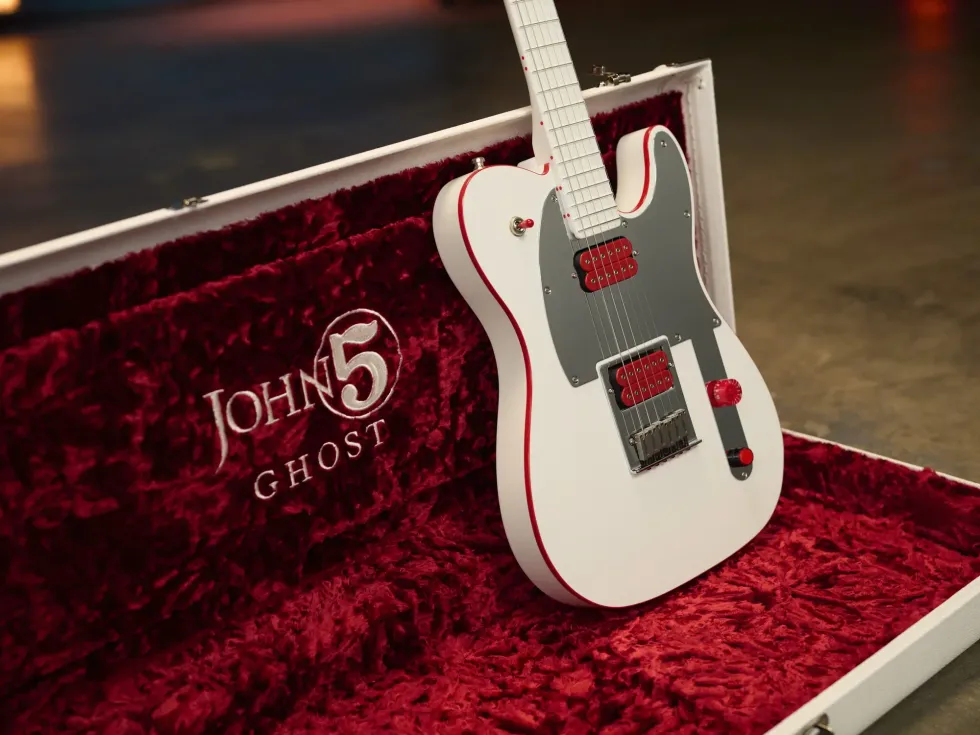
Along with the Telecaster, John 5 wanted to give something extra to fans, which has come to life in his signature collection of accessories. The accessories collection includes a white leather strap with red suede backing, a 10’ cable in artic white with custom molded red ends and a six-pack of 351 celluloid picks featuring John 5’s logo and graphics as twisted as his Telecaster playing.
“Over the span of his career, John 5 has shown that his guitar skills know no bounds in terms of genre or sound,” said Justin Norvell, EVP of Product at FMIC. “The Ghost Telecaster® is a celebration of his iconic style, with a killswitch that allows rapid-fire stutter effects and a chrome pickguard that completes the stunning look of this guitar. Beyond that, the signature capsule collection allows John 5 to give fans something that celebrates the whole visual experience of his artistry, not just his inventive guitar playing.”
John 5, now guitarist for Mötley Crüe, started his career as a session player before establishing himself as the ax-man for hard rock heavyweights including David Lee Roth and Rob Zombie. For almost three decades, John 5 has become one of the most in-demand guitar players on the planet, having worked with an impressive array of talent from across the industry. An eternal student of music, John 5’s expansive knowledge of various genres shows up in his bluegrass licks, sweep-picking solos and high-speed chicken-pickin’ lines – all with a Fender Telecaster® in hand. This summer, John 5 can be seen shredding on the Ghost Telecaster, giving fans worldwide the chance to catch him in action while on tour with Mötley Crüe.
Exploring the Limited Edition John 5 Ghost Telecaster | Fender Artist Signature | Fender
Fender John 5 Ghost Telecaster - Arctic White with Maple Fingerboard
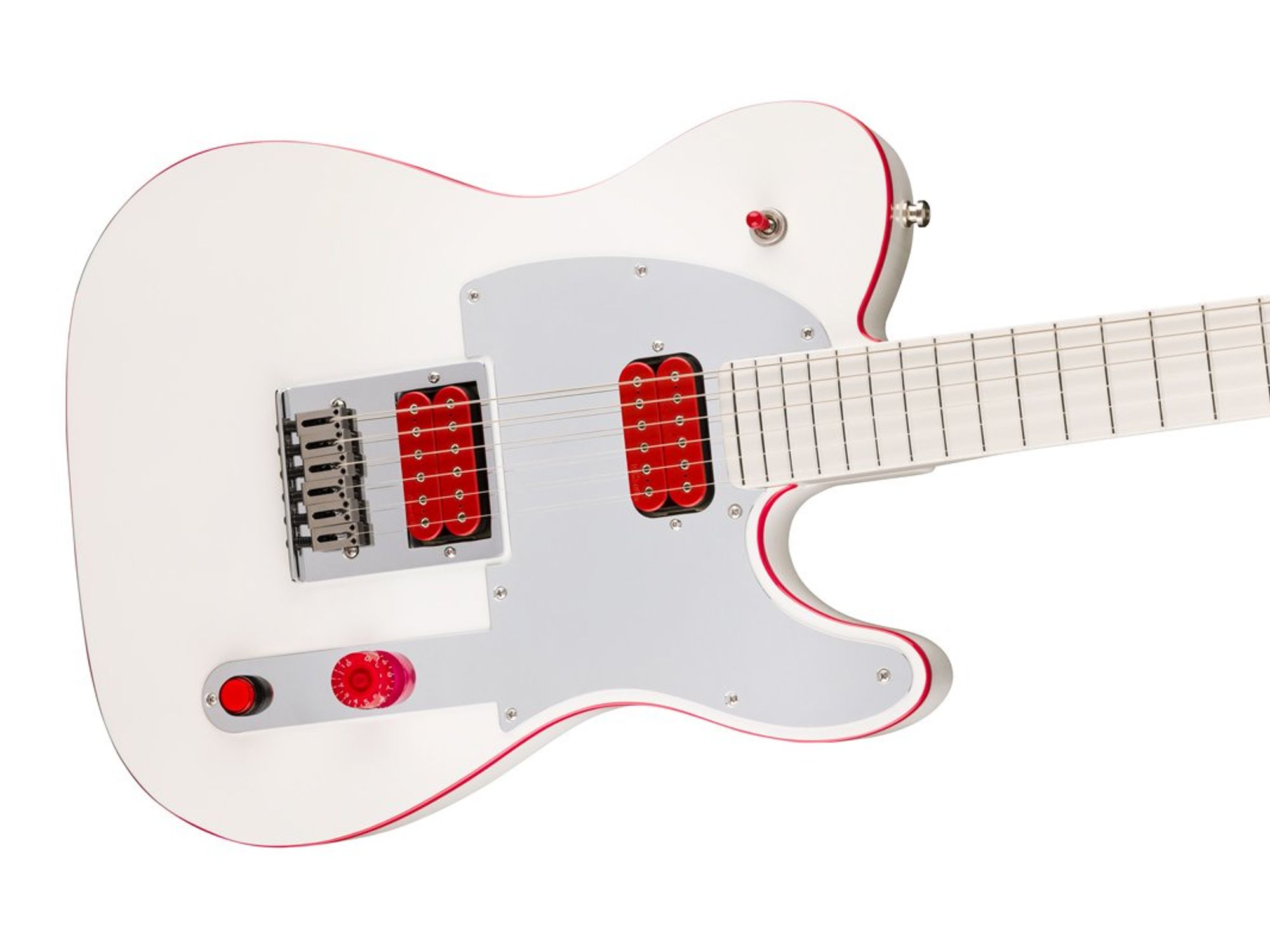
The John 5 Ghost Telecaster features a top-bound alder body and 1-piece maple neck finished entirely in an enchanting Arctic White gloss and accented by striking red appointments and a gleaming mirrored pickguard/control plate. DiMarzio D Activator humbuckers deliver harmonically rich modern crunch, harnessed by a performance-oriented control set with a 3-way toggle mounted to the upper bout for swift pickup switching and pickguard-mounted master volume and arcade-style "kill switch" for rapid-fire stutter effects. Deluxe locking tuners and 6-saddle tele bridge with block steel saddles ensure rock-solid tuning stability and spot-on intonation. The John 5 Ghost Telecaster is entombed in a custom white tolex hardshell case with crushed red interior featuring John 5 Ghost embroidery.






